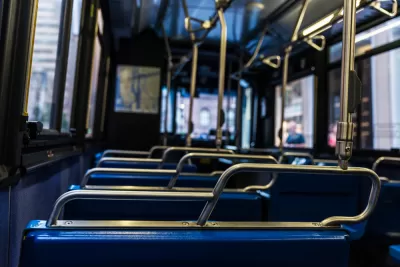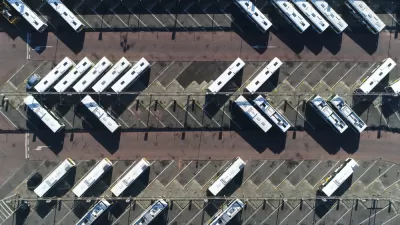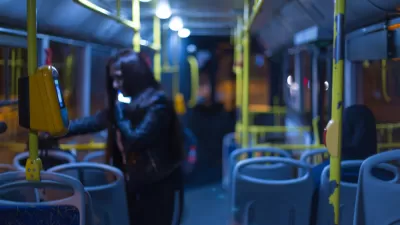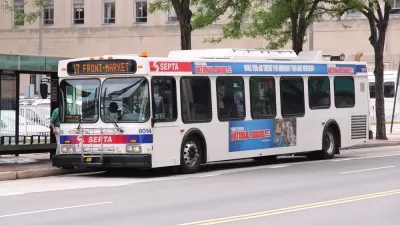U.S. transit systems are still scrambling to find alternate funding sources and adjust their service to new needs as ridership remains below pre-pandemic levels.

“How can you fill a revenue gap when the riders haven’t come back?” As Jared Brey writes in Governing, this is becoming an increasingly urgent question for transit agencies around the country.
For San Francisco’s Bay Area Rapid Transit (BART), the answer may be putting a measure on the ballot asking voters to fund transit more heavily.“BART’s budget is balanced for the 2023-2024 fiscal year, but next year, it’s facing a $140 million deficit,” Brey explains. “Every year after that the system is looking at a deficit of around $300 million.” And while the agency has requested funding from the state, so far, they’ve only seen cuts in Governor Gavin Newsom’s proposed budget.
On the other side of the country, “The Metropolitan Transportation Authority in New York is considering raising subway fares above $3 as part of a suite of measures to plug an estimated $2 billion yearly revenue gap once federal funding runs out. The Massachusetts Bay Transportation Authority (MBTA) is facing gaps of between $286 million and $542 million in fiscal years 2026-2028 and is leaning more on state and local subsidies than it used to; MBTA’s fare recovery ratio dropped from 43 percent before the pandemic to less than 25 percent in the current budget, according to Lisa Battiston, an agency spokesperson.”
Reducing service may seem like an attractive option for cash-strapped agencies, but could in fact be “a feedback loop that makes everyone worse off,” according to Garett Shrode, a policy analyst at the Eno Center for Transportation. “Cutting service to save money would harm those riders and wouldn’t do much for most agencies’ budgets in the long run,” Shrode says. For many transit agencies, the path forward remains unclear.
FULL STORY: City Transit Systems Begin to Peer Over the Fiscal Cliff

Planetizen Federal Action Tracker
A weekly monitor of how Trump’s orders and actions are impacting planners and planning in America.

San Francisco's School District Spent $105M To Build Affordable Housing for Teachers — And That's Just the Beginning
SFUSD joins a growing list of school districts using their land holdings to address housing affordability challenges faced by their own employees.

The Tiny, Adorable $7,000 Car Turning Japan Onto EVs
The single seat Mibot charges from a regular plug as quickly as an iPad, and is about half the price of an average EV.

Seattle's Plan for Adopting Driverless Cars
Equity, safety, accessibility and affordability are front of mind as the city prepares for robotaxis and other autonomous vehicles.

As Trump Phases Out FEMA, Is It Time to Flee the Floodplains?
With less federal funding available for disaster relief efforts, the need to relocate at-risk communities is more urgent than ever.

With Protected Lanes, 460% More People Commute by Bike
For those needing more ammo, more data proving what we already knew is here.
Urban Design for Planners 1: Software Tools
This six-course series explores essential urban design concepts using open source software and equips planners with the tools they need to participate fully in the urban design process.
Planning for Universal Design
Learn the tools for implementing Universal Design in planning regulations.
Smith Gee Studio
City of Charlotte
City of Camden Redevelopment Agency
City of Astoria
Transportation Research & Education Center (TREC) at Portland State University
US High Speed Rail Association
City of Camden Redevelopment Agency
Municipality of Princeton (NJ)





























